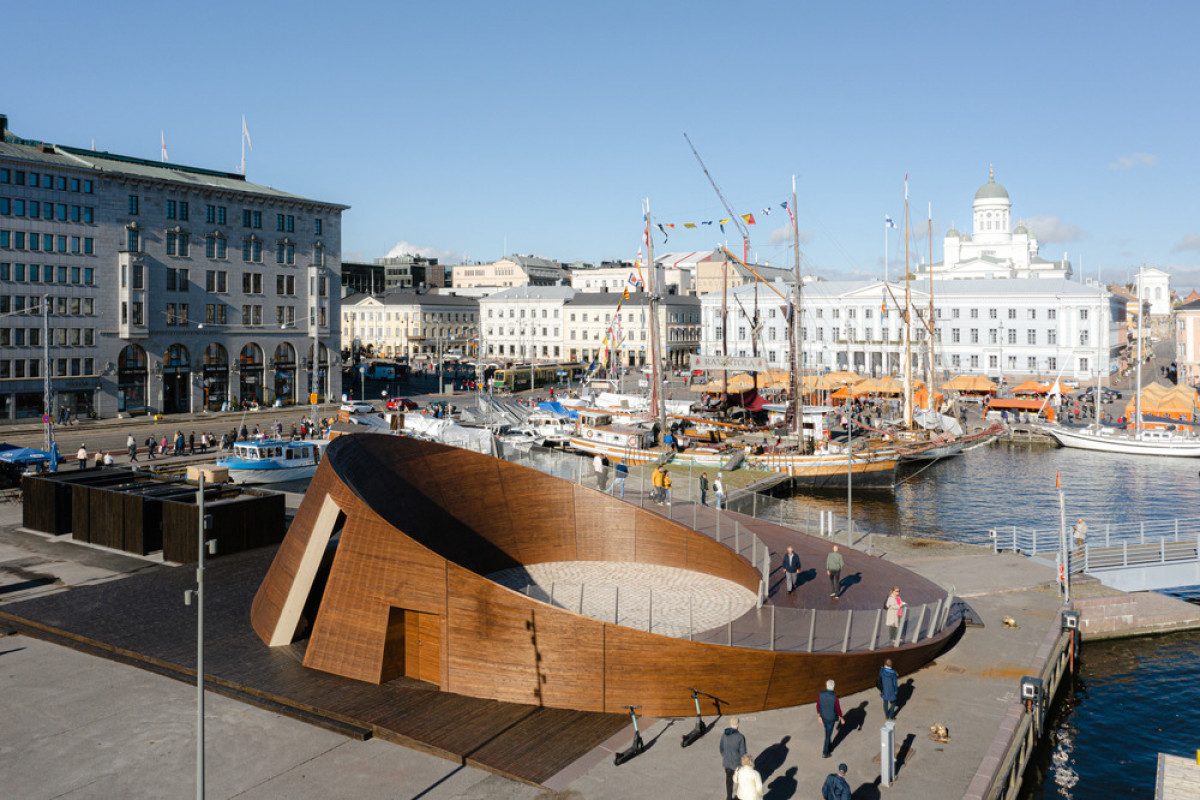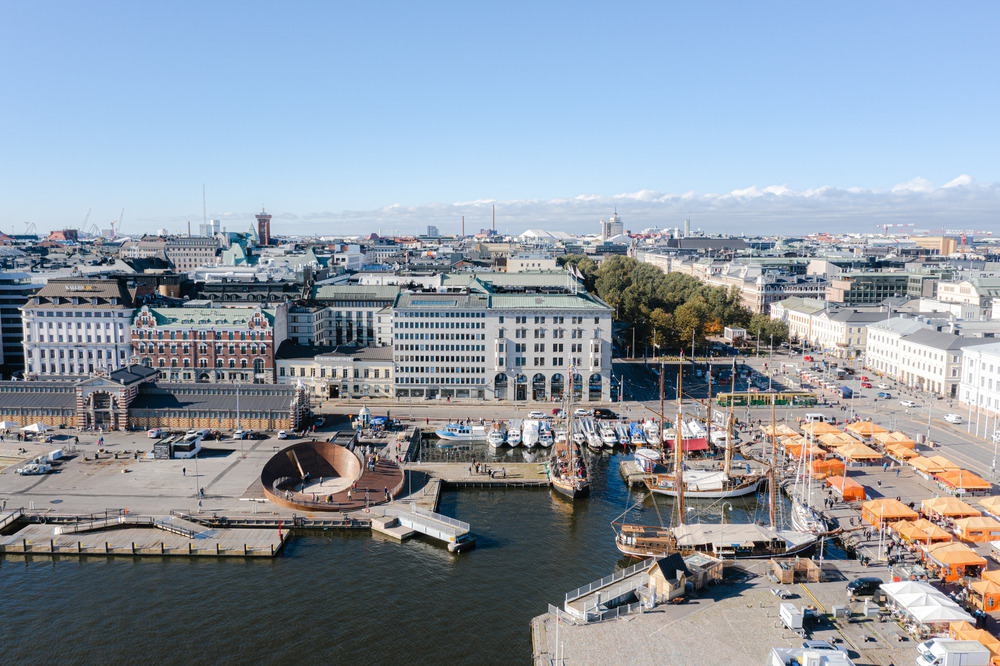13 Dec 2022

The Helsinki Biennial Pavilion, located at the South Harbor of Helsinki in Finland, has received the Architecture MasterPrize™ (AMP) honouring international designs in various disciplines of architecture. Each submitted design in the competition was evaluated by an esteemed AMP Jury. The Helsinki Biennial Pavilion, designed by Verstas Architects, was recognized in the Architectural Design - Cultural Architecture category. In 2021, the pavilion served as the entry point to the Helsinki Biennial art festival, which took place on Vallisaari island. The ferry to Vallisaari departs from a pier adjoining the pavilion, and the Helsinki Biennial Pavilion will once again serve art festival visitors next summer during the second biennial.

The goal of Verstas Architects´ design was to create a free, open space for everyone. As a collective space, the pavilion unites people for social interaction and small, temporary events, while also providing shelter and a serene respite from the bustling city. Accessible all year round, the pavilion provides a public open-air urban living room space where one can pause and enjoy the presence of the sea in the heart of the city.
The principal designer of the pavilion, Jussi Palva, describes the design process: “The distinctive ponds of Vallisaari island, created by natural rocks, are unique. The ponds were formed during the ice age when the circular motion of the rocks carved bays on the cliffs when the ice melted. This round movement of rocks has created exciting forms that are the size of the pond. These elements were our inspiration when designing the pavilion. We aimed to bring a piece of the archipelago´s nature to the harbour."
The pavilion is made of wood, traditionally used for buildings and boats in the archipelago. As a locally available material with a capacity to store carbon, wood is ecologically sustainable and long-lasting in the northern climate.
The fabrication process of the pavilion was guided by a digital 3D building model and was documented on video. Built-in a carpenter’s workshop in a small harbour town, the prefabricated modules for the pavilion were shipped by sea and loaded directly onto the site for installation. At first, the intention was to have the pavilion dismantled after each Biennial. This prompted the decision to make the pavilion with prefabricated wooden elements that can easily be moved around by ship. However, it was quickly realized that the pavilion has a much bigger role to play if left to stand in place all year round.
The Helsinki Biennial on Vallisaari island is part of the city’s strategy to make the archipelago more accessible, and the pavilion was designed to provide an anchor point for the event in the city. It is a temporary building permitted to remain in place until 2024. The designers of the pavilion, Verstas Architects, are known for buildings such as the new Aalto University campus and Saunalahti School in Espoo Finland. Vuosaari High School by Verstas Architects, Helsinki´s most multilingual high school, also received an honourable mention by the 2022 Architecture MasterPrize™ (AMP) awards.
Technical sheet
Architectural design: Verstas Architects
Designers: Jussi Palva (principal designer), Väinö Nikkilä, Riina Palva ja Ilkka Salminen (lead architects)
Team: Otto Autio, Pyry Kantonen, Mikko Rossi (project architects), Ulpu Kojo (interior architect)
Collaborators
Structural Engineer: Kai Palin, Valtteri Kajasniemi, Jukka Laakkonen / Expecon Oy
Geotechnical Engineer: Mirva Koskinen / City of Helsinki / Urban Environment Division
HVAC Engineer: Tapani Rantala / Sitowise Group Oyj
Electrical Engineer: Kalevi Hämäläinen / Stacon Oy
Traffic Engineer: Pekka Nikulainen / City of Helsinki / Urban Environment Division
Fire Protection Engineer: Sami Loukkaanhuhta / Paloässät Oy
Contractor: Jari Mikkola, Joona Tykkä, Ville Jouskari, Tero Palkeinen / Helsinki City Construction Services, Stara
Wood Workshop: Mikko Suonpää / Timberpoint Oy
Project Scale: Gross Built Area: 187 m2 ( 420 m2 with outdoor auditorium)
Volume: 374 m3
Project Schedule: Design: June 2019 – August 2020
Construction: February 2020 – October 2020
Construction completed: October 2020
Helsinki Biennial opens: June 2021